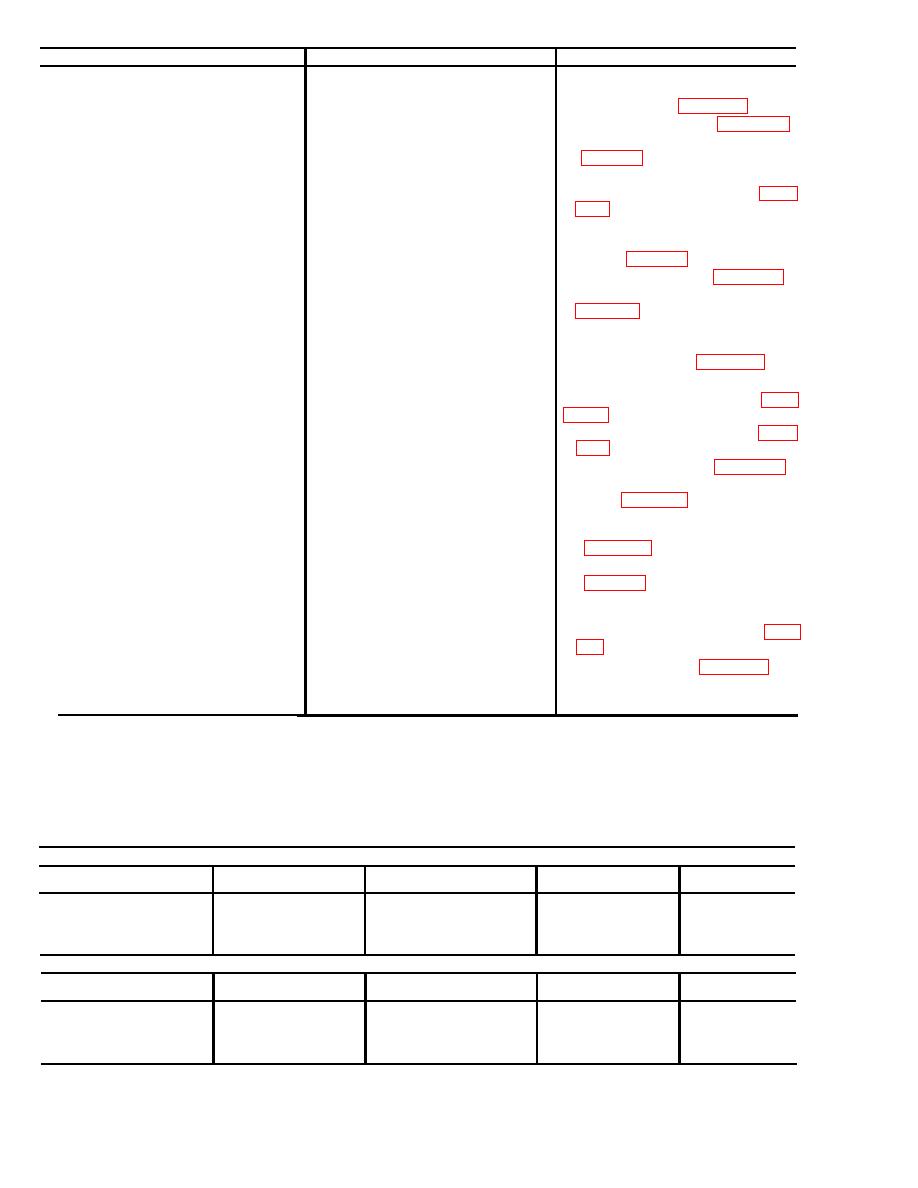 |
|||
|
|
|||
|
|
|||
| ||||||||||
|
|
 Table 5-1. Troubleshooting
Malfunction
Probable cause
Corrective action
a. Compressor thermostatic switch
a. Test the switch after compressor
1. Compressor fails to start.
(internal) open or defective.
is cool; if switch is open, replace
the compressor (para 5-23).
b. Replace compressor (para 5-23).
b. Compressor defective.
c. Replace
temperature
control
c. Temperature control defective.
a. Replace valve if correct adjust-
a. Expansion valve defective or in-
2. Compressor starts but fails on over-
ment cannot be obtained (para
correctly set superheat.
load.
refrigerant flow correctly.
b. Remove small amount of refri-
b. Discharge pressure too high.
gerant (para 6-1).
c. Compressor defective.
c. Replace compressor (para 5-23).
d. Defective liquid line bypass or
d. Test control coils (para 6-16 or
liquid line solenoid valves.
opening and closing. Replace coils
or valves if defective.
Replace dehydrator (para 5-18).
Dehydrator defective.
3. Suction pressure too low.
Replace compressor (para 6-29).
Compressor defective.
4. Discharge pressure inadequate.
a. Liquid line solenoid valve defec-
a. Replace solenoid valve (para
5. Suction pressure high.
tive.
b. Replace bypass valve
b. Hot gas bypass valve defective.
c. Replace compressor (para 5-23).
c. Compressor defective.
d. Adjust or replace regulating
d. Pressure regulating valve inoper-
valve (para 5-19).
ative.
e. Frost on the evaporating coil.
e. Test pressure regulating valve,
adjust or replace defective valve
Overcharge of refrigerant.
6. Discharge pressure high.
Remove smal] amount of refrigerant
Lack of refrigerant.
7. Suction and discharge pressure low
Check sight glass for appearance of
bubbles, add R-22 refrigerant as
required. Check for leaks (para
Compressor defective.
Replace compressor (para 5-23).
8. High suction pressure with low dis-
charge pressure.
System pressure inadequate.
Refer to instructions below:
9. System losing cooling capacity
sure gages on the service valves and turn the
If the system is losing its cooling capacity, or is
valves two turns to open, exposing gages to the
in some manner not functioning properly, a check
system pressures. Compare gage readings to the
of the system operating pressure will frequently
normal operating pressure indicated below:
lead to the cause of the malfunction. Install pres-
Table 5-2. Normal Operating Pressures
90 F Dry bulb return air to unit
Outdoor ambient
50 F.
75 F.
100 F.
125 F.
temperature
Normal gage pressure
50-60
Suction
56-65
65-75
75-90
135155
Discharge
185-205
275-295
400-420
80 F Dry bulb return air to unit
Outdoor ambient
50 F.
temperature
75 F.
100 F.
125 F.
Normal gage pressure
40-50
Suction
45-55
55-65
65-75
130150
Discharge
180-200
270-290
390-410
5-2
|
|
Privacy Statement - Press Release - Copyright Information. - Contact Us |